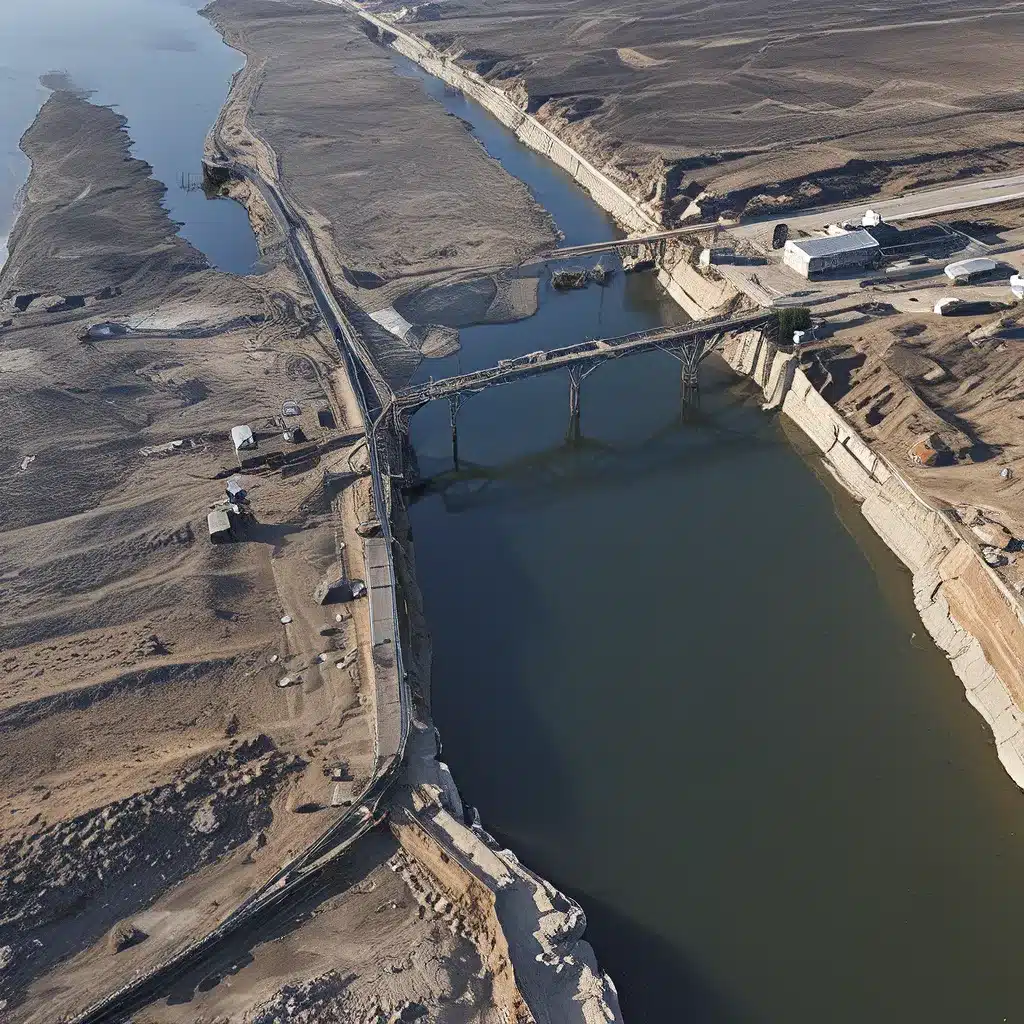
As the water industry navigates the uncharted waters of the 21st century, a tsunami of technological disruption is radically transforming the way we manage, treat, and distribute this precious resource. Gone are the days of stagnant, analog-driven water systems – the future is digital, connected, and brimming with possibilities.
Riding the Waves of Industry 4.0
At the heart of this transformation lies the Fourth Industrial Revolution, or Industry 4.0. This disruptive wave of connectivity, advanced analytics, and intelligent automation is sweeping through the water industry, much like it has reshaped manufacturing, logistics, and beyond.
Imagine a future where your water treatment plant is a smart, self-optimizing marvel – sensors constantly monitoring water quality, predictive algorithms forecasting maintenance needs, and robotic systems autonomously adjusting processes in real-time. This is the promise of Industry 4.0, and it’s already becoming a reality in leading “lighthouse” facilities around the world.
However, the journey to this digital nirvana is not without its challenges. As McKinsey experts explain, successfully scaling up these transformative technologies requires a delicate balance of technical mastery and human-centric change management. It’s not enough to simply implement the latest gadgets – water utilities must also carefully upskill and reskill their workforce to thrive in this new era.
Waves of Change: Key Industry 4.0 Technologies
So, what are the specific technologies that are reshaping the water industry? Let’s dive into a few of the most impactful innovations:
Automation and Robotics
Imagine a world where your water treatment plant runs like a well-oiled machine, with robotic systems autonomously adjusting processes and sensors constantly monitoring water quality. This is the promise of advanced automation and robotics – taking the “human” out of repetitive, hazardous, or error-prone tasks to boost efficiency and safety.
As the World Economic Forum notes, the Fourth Industrial Revolution is ushering in a new era of “cyber-physical systems” – intelligent machines that can sense, analyze, and act on the physical world around them. In the water industry, this could mean automated valves that respond to changing flow patterns, or robotic systems that perform complex pipe inspections without human intervention.
Advanced Analytics and Predictive Maintenance
Imagine if your water treatment plant could predict equipment failures before they even happen, allowing you to proactively address issues and avoid costly disruptions. That’s the power of advanced analytics and predictive maintenance – turning mountains of sensor data into actionable insights that optimize operations and reduce downtime.
Emerging research suggests that Industry 4.0 technologies can significantly boost the “eco-efficiency” of water treatment and distribution, minimizing waste and environmental impact. By leveraging predictive algorithms and real-time monitoring, water utilities can make more informed decisions about maintenance, chemical dosing, and energy consumption.
Augmented Reality and Digital Twins
Envision a future where water industry workers can don a pair of smart glasses and see detailed, 3D overlays of underground pipes, valves, and pumps – all without ever leaving the comfort of the control room. This is the power of augmented reality (AR) and digital twins – virtual replicas of physical assets that allow for remote monitoring, troubleshooting, and training.
According to McKinsey, these transformative technologies are not just for show – they can drive real, tangible benefits for water utilities, from improving worker safety to enhancing operational efficiency. By blending the digital and physical worlds, water professionals can make more informed decisions, collaborate more effectively, and ultimately deliver better service to their customers.
Navigating the Choppy Waters of Change
As exciting as these technological advancements may be, the path to embracing Industry 4.0 in the water industry is not without its challenges. Water utilities must navigate a complex web of cultural, organizational, and regulatory hurdles to successfully scale up these disruptive innovations.
One of the biggest obstacles? Engaging and empowering the workforce. As McKinsey experts emphasize, even the most advanced technologies will fall flat if the people behind them aren’t properly equipped and motivated to adapt. Water utilities must invest heavily in upskilling and reskilling their employees, ensuring they have the digital literacy and problem-solving skills to thrive in the new era.
But the rewards of embracing this change can be substantial. Water utilities that successfully navigate the choppy waters of Industry 4.0 can expect to see significant improvements in operational efficiency, cost savings, and environmental sustainability. As McKinsey research suggests, Industry 4.0 front-runners can expect a 122% positive cash flow change, while laggards could see a 23% downturn.
Riding the Tides of the Future
As the water industry continues to evolve, one thing is certain: the disruptive forces of Industry 4.0 are here to stay. The utilities that embrace this change, upskill their workforce, and strategically invest in transformative technologies will be the ones that thrive in the years to come.
At Inland Waters Inc., we’re committed to helping our partners navigate these choppy waters. Our team of experts is well-versed in the latest Industry 4.0 innovations, from advanced automation to predictive analytics. We work closely with water utilities to develop tailored digital transformation strategies, ensuring they can ride the waves of disruption and emerge as industry leaders.
So, are you ready to dive into the future of water? Let’s chart a course towards a more efficient, sustainable, and connected water industry – together.


